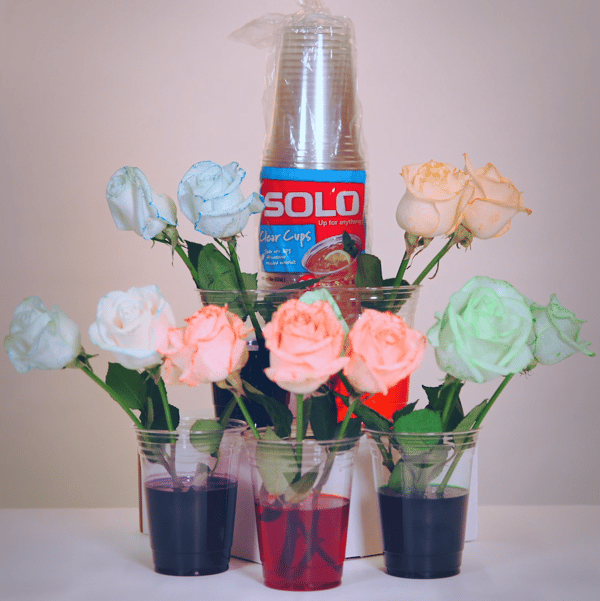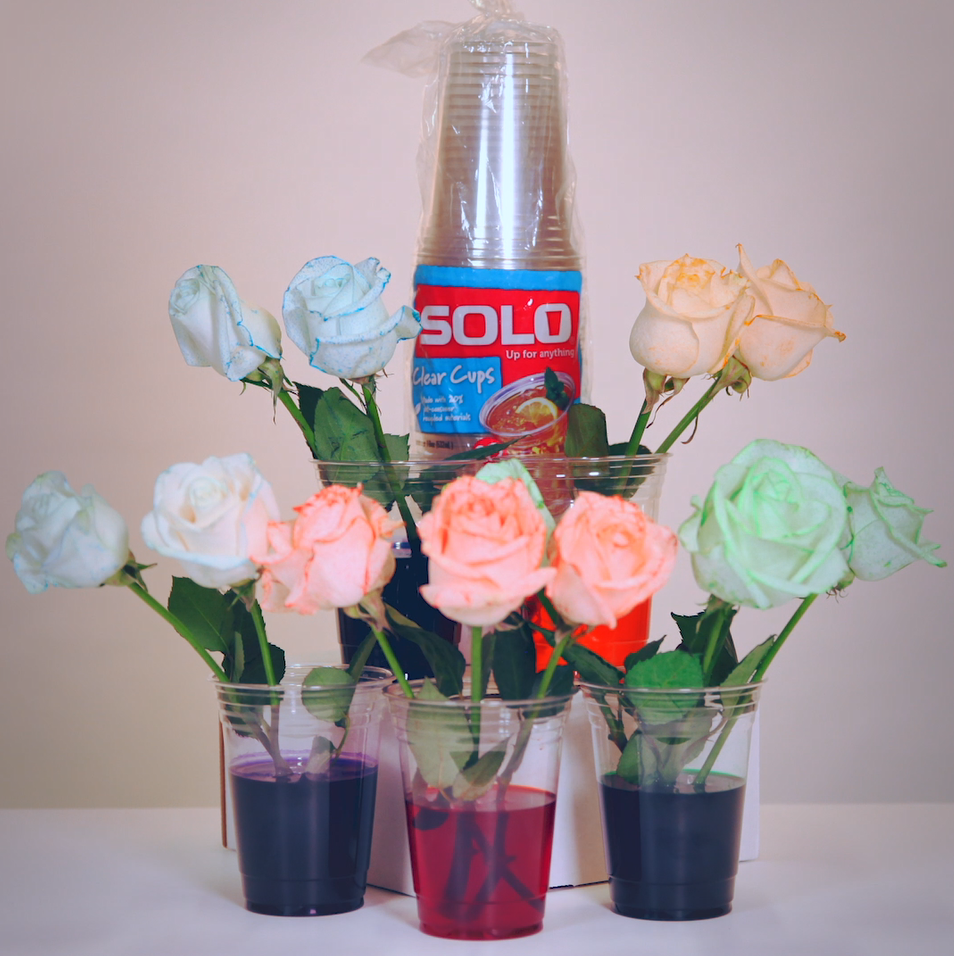Looking for a DIY experiment to entertain the kids? This flower color experiment can be created with a few flower cuttings from the backyard. No backyard? No problem. The common flowers used in this experiment can be found at any local grocer.

The experiment works particularly well with roses, hydrangeas or daisies. If you’re on a time crunch, hydrangeas typically change color the quickest. But if you’re looking for the most colorful change you should use roses. They take a bit longer to take up the color but the results can be striking.
How Do I Start My Flower Coloring Experiment?
First, find a color dry room where you will be able to let the flowers sit overnight. Then fill each of your cups ¾ full of tap water. Add a few drops of food coloring to each and you’re ready to go. Place one flower in each of the cups and let them sit overnight. You can observe your amazing results the following morning.
Why Do the Flowers Change Colors?
The stems of the flowers are full of a tissue called xylem. This is what brings nutrients to the different parts of the flower. As water evaporates of the petals of the flower the negative pressure results in more water being pulled up to replace it. Think of the way a straw works – it’s like that.
Have fun and share your results with us using #STEMwithSOLO.



